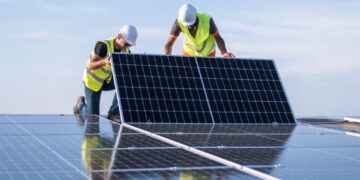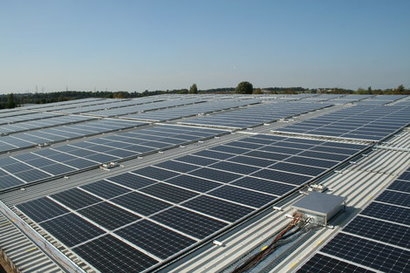Booming Chinese solar installations propelled annual worldwide investments in renewable energy and energy-smart technology 3 percent higher to $333.5 billion last year—the second-highest on record, a Bloomberg New Energy Finance (BNEF) report showed on Tuesday.
China and the U.S. led the way with the largest portions of clean energy investment, and while European investment dropped — pushed down by changed policies in the UK and Germany — funding for renewables and smart energy tech in Australia and Mexico boomed, BNEF said.
The 2017 investments were just 7 percent below the all-time high of $360.3 billion reached in 2015, but last year’s figure is remarkable because capital costs for the leading renewable investment — solar — have been sharply dropping and were some 25 percent cheaper per MW compared to 2015, said Jon Moore, BNEF’s chief executive.
Solar investment led the way in global financing, with $160.8 billion last year, accounting for 48 percent of the world’s total clean energy investment and rising 18 percent compared to 2016. Chinese solar investment stood at $86.5 billion last year — just over half of all solar spending — and up a staggering 58 percent over 2016, with 53 GW of PV capacity installed, increased from 30 GW in 2016.
Chinese solar installations in 2017 exceeded BNEF forecasts by 20 GW, due to two main reasons, Justin Wu, head of Asia-Pacific for BNEF, said.
The first was that Chinese regulators — under pressure from the industry — were slow to curb construction of utility-scale projects outside allocated government quotas. The second reason was that with declining solar costs, China installed more solar panels on rooftops and industrial parks, and these projects are not part of the government quotas.
China’s total investment in renewables and smart energy jumped 24 percent to a new record of $132.6 billion last year. The second-largest country investment came from the United States at $56.9 billion, up 1 percent annually “despite the less friendly tone towards renewables adopted by the Trump administration”, BNEF said.
Overall, clean energy investments in Europe dropped, with Germany’s down 26 percent and the UK’s plunging 56 percent amid changes in policy support, although financing rose in some countries with smaller portions of the total investments, including in the large economies of France and Italy.
On the other hand, large wind and solar project investments pushed Australia’s financing up 150 percent to a record $9 billion, and Mexico’s investment up 516 percent to $6.2 billion.
In terms of overall global investment by sector, after the leading solar came wind, with investments of $107.2 billion, down 12 percent annually.
The third-largest sector of clean energy investment was energy-smart technologies, at $48.8 billion, up by 7 percent from 2016 and the highest on record, as investment in smart meters, battery storage, smart grid, and electric vehicles (EVs) accelerated with asset finance and equity-raising by companies.
Regarding capacity, BNEF’s preliminary estimates show that a record 160 GW of clean energy generating capacity — not counting large hydro projects — were commissioned globally last year, of which solar led with 98 GW, wind came in second at 56 GW, and biomass, waste-to-energy, small hydro, geothermal, and marine capacity coming in far behind.
The record-generating capacity comes at a time in which renewable energy costs are dropping fast.
According to the January 2018 Renewable Power Generation Costs in 2017 report by the International Renewable Energy Agency (IRENA), electricity costs from renewable power generation continued to decline last year, with the global weighted average levelized cost of electricity (LCOE) of utility-scale solar PV dropping 73 percent since 2010, to average $0.10/kWh for new projects commissioned in 2017.
Based on the results of last year’s renewable power auctions that saw some record-low auction prices for solar PV in the Middle East and Latin America, the agency expects cost reductions to continue through 2020 and beyond. And more importantly, IRENA said in its report:
“Electricity from renewables will soon be consistently cheaper than from most fossil fuels. By 2020, all the renewable power generation technologies that are now in commercial use are expected to fall within the fossil fuel-fired cost range, with most at the lower end or undercutting fossil fuels.”























